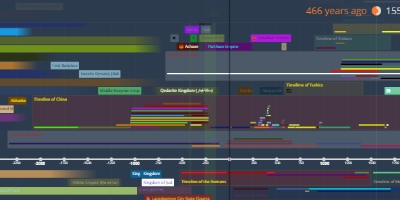Southern Ming (南明) (1 mayo 1644 año – 1 ene 1662 año)
Descripción:
The Southern Ming (Chinese: 南明; pinyin: Nán Míng), officially the Great Ming (Chinese: 大明; pinyin: Dà Míng), was a series of dynastic rump states ruled by the Zhu clan in southern China following the fall of Beijing in 1644. Shun forces led by Li Zicheng captured Beijing and the Chongzhen committed suicide. The Ming general Wu Sangui then opened the gates of the Shanhai Pass in the eastern section of the Great Wall to the Qing banners, in hope of using them to annihilate the Shun forces. Ming loyalists fled to Nanjing, where they enthroned Zhu Yousong as the Hongguang Emperor, marking the start of the Southern Ming. The Nanjing regime lasted until 1645, when Qing forces captured Nanjing, and by then Zhu had been executed. Later figures continued to hold court in various southern Chinese cities, although the Qing considered them to be pretenders.The Nanjing regime lacked the resources to pay and supply its soldiers, who were left to live off the land and pillaged the countryside. The soldiers' behavior was so notorious that they were refused entry by those cities in a position to do so. Court official Shi Kefa obtained modern cannons and organized resistance at Yangzhou. The cannons mowed down a large number of Qing soldiers, but this only enraged those who survived. After the Yangzhou city fell in May 1645, the Manchus started a general massacre pillage and enslaved all the women and children in the notorious Yangzhou massacre. Nanjing was captured by the Qing on June 6 and the Hongguang Emperor was taken to Beijing and executed in 1646.
The literati in the provinces responded to the news from Yangzhou and Nanjing with an outpouring of emotion. Some recruited their own militia and became resistance leaders. Shi was lionized and there was a wave of hopeless sacrifice by loyalists who vowed to erase the shame of Nanjing. By late 1646, the heroics had petered out and the Qing advance had resumed. Notable Ming "pretenders" held court in Fuzhou (1645–1646), Guangzhou (1646–1647), and Anlong (1652–1659). The Yongli Emperor was the last and also the longest reigning Emperor of the dynasty (1646-1662) and managed to fight against the Qing forces alongside the peasant armies in southwestern China prior to his capture in Myanmar in 1662. The Prince of Ningjing dwelled in the Kingdom of Tungning (based in present-day Tainan, Taiwan) who continued claiming to be the rightful successor to the throne of Ming but with no real political power there until 1683.
Añadido al timeline:
fecha:
1 mayo 1644 año
1 ene 1662 año
~ 17 years
